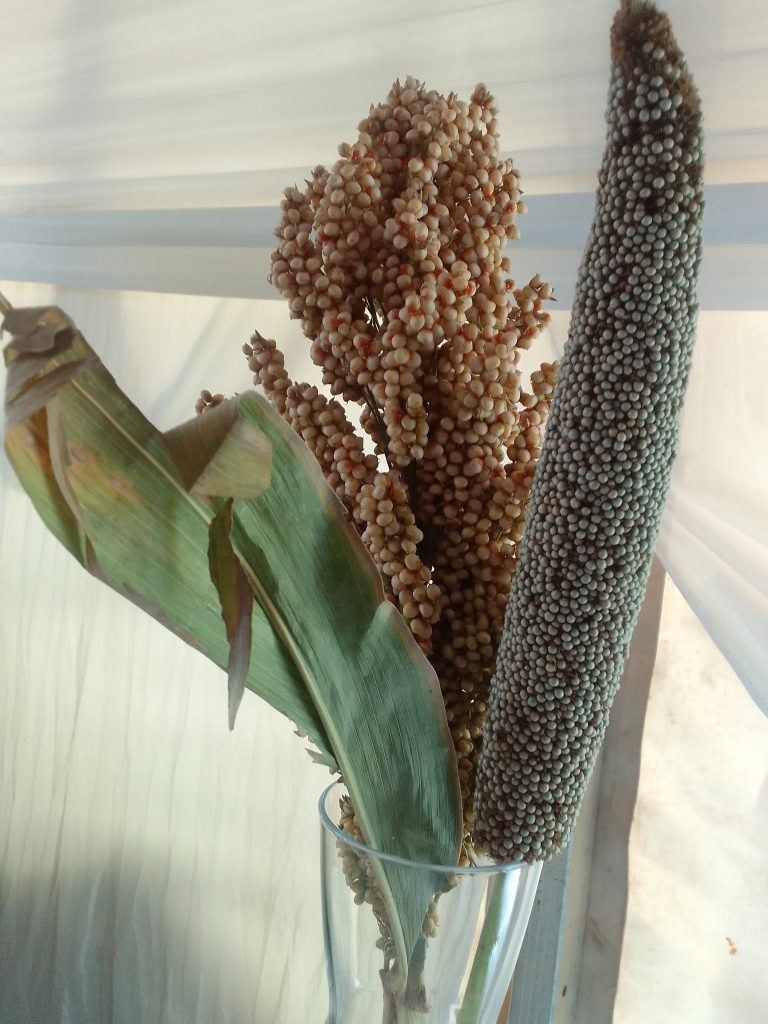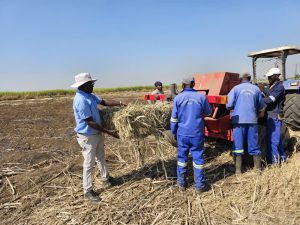Moses Ziyambi
Increased cultivation of millets in Zimbabwe could play a critical role in alleviating food insecurity in a country which is experiencing adverse effects of climate change, it has been agreed.
Various stakeholders who participated at an event to mark the International Year of Millets on March 23 called upon farmers and authorities to facilitate a rapid transition to climate resilient agriculture.
The event was organized by the United Nations (UN) Food and Agriculture organization (FAO) in partnership with government and other stakeholders, and was held at Great Zimbabwe Hotel outside Masvingo town.
All speakers and presenters at the event highlighted the climate shocks which every year disrupt agriculture and render millions of people hungry as a wakeup call to drive a paradigm shift in food production systems.
In his address, FAO sub-regional coordinator for Southern Africa Dr Patrice Talla said it was important that greater attention was given to millets which are more drought-resistant.
“There is realization that traditional grains could be the panacea to drought-induced food insecurity, and that they have an important role to play in the development trajectory of Zimbabwe. Millets, which have the resilience to grow under harsh conditions, are a staple for millions of people in the world, yet their production is declining,” said Dr Talla.
He said FAO was prepared to support government efforts to promote serious millet farming to empower smallholder farmers and improve food security.
The secretary of the International Treaty on Plant Genetic Resources for Food and Agriculture (ITPGRFA) Dr Kend Nnadozie also made an impassioned plea for the support of millet production which are a critical part of Zimbabwe’s cultural heritage.
“Millets are rich in heritage and full of potential in Zimbabwe, and they are scientifically proven to be more resilient than such other crops as maize. The drive to attain greater food security should take millets into account,” said Dr Nnadozie.
He called for the development of new value chains to integrate millets into food industries and daily diets.
The government of Italy was strongly represented at the function, with the delegation pinpointing the great Italian contributions towards agriculture transformation efforts not only in Zimbabwe but in Africa as a whole.
“Italy is a strong supporter of the production of traditional grains and has invested millions of dollars to help African countries adopt better farming techniques in order to fight food insecurity,” said Ignazio Verde, a representative from the European country’s Ministry of Agriculture.
In his keynote address, the Deputy Minister of Lands, Agriculture, Water and Rural Resettlement Vangelis Haritatos said the government recognised traditional grains key role players in light of the severe limitations associated with maize farming.
“Climate-induced droughts have rendered millions of our people food insecure and this is a wake-up call for Zimbabwe to think beyond maize. Millets are not only more nutritious and healthier, they are more adaptable to arid climatic conditions too,” he said.
Also called nutri-cereals for their high nutritional value, traditional grains cultivated in Zimbabwe since pre-colonial times are finger millet (rukweza), pale millet (mhunga) and sorghum (mapfunde).
Small holder farmers from the Shashe Block who spoke to EnviroPress after the event said they favoured a new pale millet variety called Tsholotsho because it has prickles which keep birds and other vermin away.






